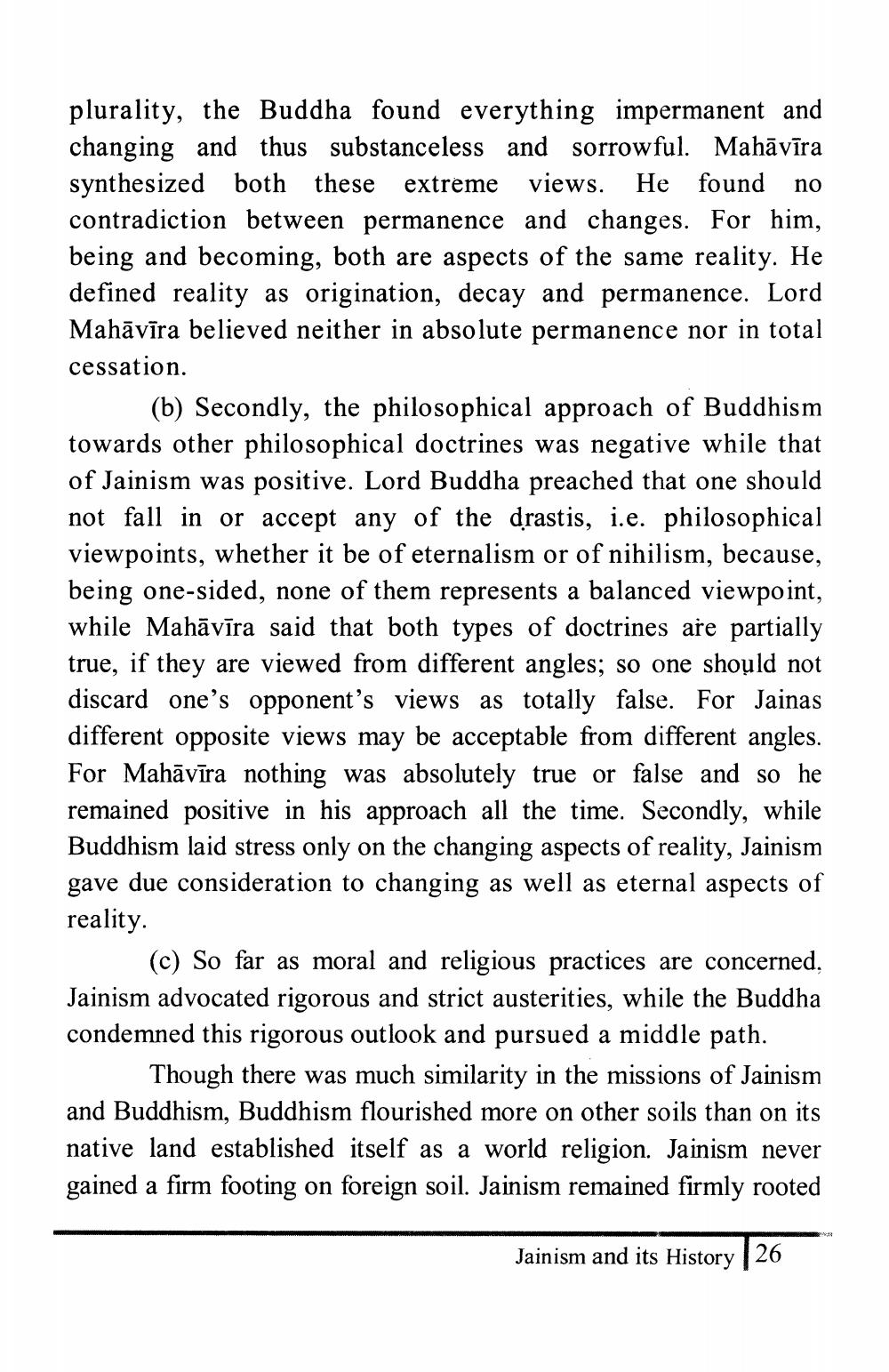________________
plurality, the Buddha found everything impermanent and changing and thus substanceless and sorrowful. Mahāvīra synthesized both these extreme views. He found no contradiction between permanence and changes. For him, being and becoming, both are aspects of the same reality. He defined reality as origination, decay and permanence. Lord Mahāvīra believed neither in absolute permanence nor in total cessation.
(b) Secondly, the philosophical approach of Buddhism towards other philosophical doctrines was negative while that of Jainism was positive. Lord Buddha preached that one should not fall in or accept any of the drastis, i.e. philosophical viewpoints, whether it be of eternalism or of nihilism, because, being one-sided, none of them represents a balanced viewpoint, while Mahāvīra said that both types of doctrines are partially true, if they are viewed from different angles; so one should not discard one's opponent's views as totally false. For Jainas different opposite views may be acceptable from different angles. For Mahāvīra nothing was absolutely true or false and so he remained positive in his approach all the time. Secondly, while Buddhism laid stress only on the changing aspects of reality, Jainism gave due consideration to changing as well as eternal aspects of reality.
(c) So far as moral and religious practices are concerned, Jainism advocated rigorous and strict austerities, while the Buddha condemned this rigorous outlook and pursued a middle path.
Though there was much similarity in the missions of Jainism and Buddhism, Buddhism flourished more on other soils than on its native land established itself as a world religion. Jainism never gained a firm footing on foreign soil. Jainism remained firmly rooted
Jainism and its History
26




